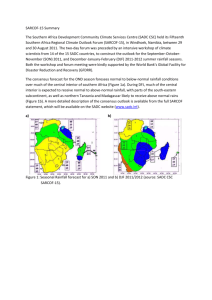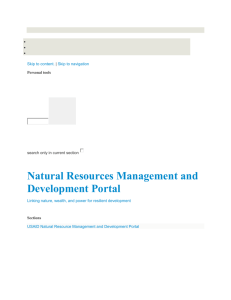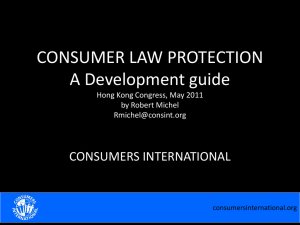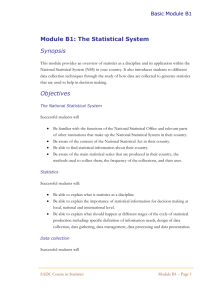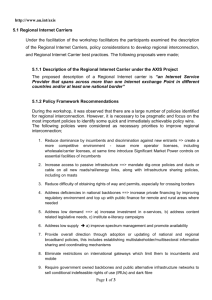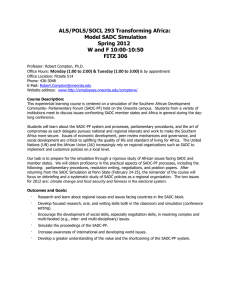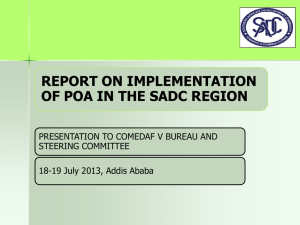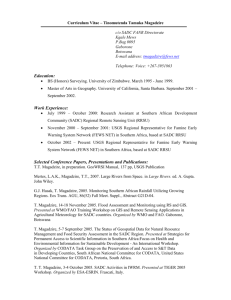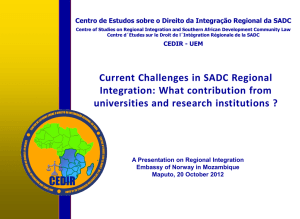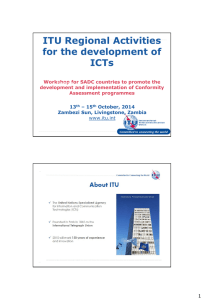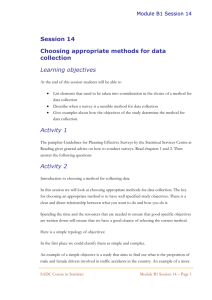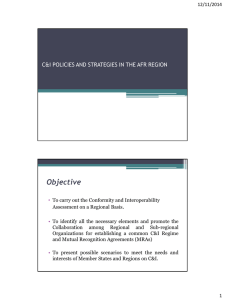Expected Output
advertisement
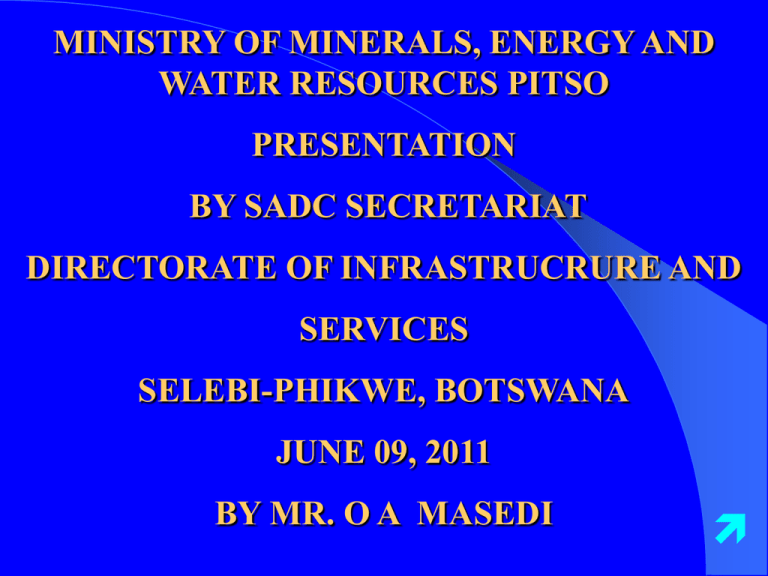
MINISTRY OF MINERALS, ENERGY AND WATER RESOURCES PITSO PRESENTATION BY SADC SECRETARIAT DIRECTORATE OF INFRASTRUCRURE AND SERVICES SELEBI-PHIKWE, BOTSWANA JUNE 09, 2011 BY MR. O A MASEDI The Southern African Development Community (SADC) BACKGROUND •15 Member States including three island states •Aim: to become an integrated regional economy on the basis of equity & mutual benefit •Surface area: 9.3m km2 •Population: 220m •Characterized by multiple shared water courses (15) and aquifers •High spatial and temporal variability in water resources availability Relationships between Various Instruments in SADC SADC Treaty SADC RISDP SADC Revised Protocol on Shared Watercourses Regional Water Policy Guidelines on National Water policies and strategies formulation Other SADC Sector Policies & Strategies SADC Vision for Water Life & the environment Regional Framework for Action Regional Water Strategy RSAP 1 Regional RSA P2 RSAP 3 River Basin Plans National National Water legislation National Water Policy National Water Strategy IWRM Plans National Sector Policies RSAP 2 Conceptual Framework Capacity Building • Skills Training • Academic IWRM Training and Research Resource • Support to WD • Strengthening RBOs • Assessment Infrastructure • Energy • Monitoring • Agriculture, Food Security + Rural Livelihoods • Planning • Water Supply & Sanitation • Operation • Implementation of Protocol • Stakeholder Participation • Implementation of Policy and Strategy Water Governance Water Infrastructure Cluster Programme Code Name INF 1 Regional Strategic Water Infrastructure Programme INF 2 Implementation of the Water Supply and Sanitation Programme for SADC Regional Strategic Water Infrastructure Development To embrace the crucial function of water as a cross-cutting issue in virtually all aspects of economic and social development, To embody the very significant strategic role that water plays in regional integration, conservation of resources, economic growth and poverty alleviation, which constitute the primary goals of SADC, To emphasise to decision/policy makers in MS and to CPs that the development of a stock of national or regional water infrastructure is not ‘just a water issue’ but a fundamental requirement to reduce constraints on growth and vulnerability to climate variability. Water Supply and Sanitation Programme To develop a collaborative regional frame work for planning, implementation and management of WSS to enable Member States to effectively improve and accelerate access at country level in line with the attainment of the MDGs Five WSSP Thematic Areas Alternative financing and funding options Expected Output Financing mechanisms and strategies for WSS services to achieve national targets/MDGs developed Institutional rationalisation and strengthening Expected Output Strengthened capacity of WSS institutions to plan, implement and manage WSS services Infrastructure development support Expected Output MDG planning promoted, developed and implemented Knowledge management, advocacy and awareness creation Expected Output Knowledge and information management developed and implemented Formulation and implementation of a WSS monitoring and reporting mechanism Expected Output Harmonised WSS monitoring and reporting system developed and implemented in SADC Water Governance • • • Implementation of the Water Protocol Stakeholder participation Implementation of the water Policy and Strategy Some Key Challenges Political will Mobilisation of financial resources Institutional reforms Sustenance of ICPs Capacity constraints Sustenance of the enabling environment Disparities in economic development amongst Member States Equitable distribution of resources (water) Benefit sharing Opportunities Mutual trust and confidence building Synergies with on going initiatives Member States commitment ICPs support THANK YOU
